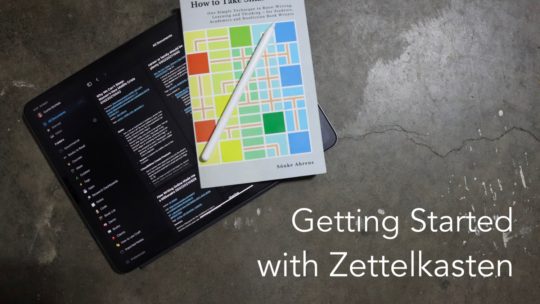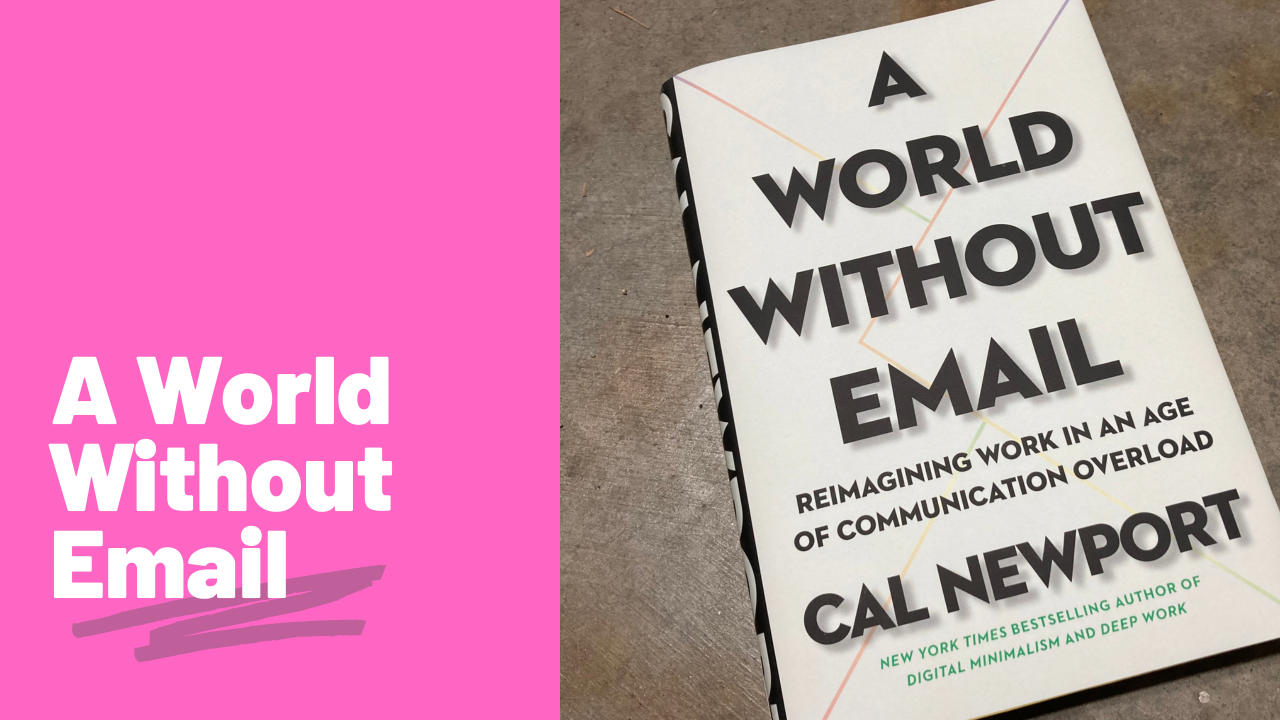Cal Newport’s latest entry into the productivity genre takes on email as a main evil in holding back the productivity of knowledge workers today1. Newport calls how we currently deal with email _The Hyperactive Hive Mind_2, which is a workflow that’s more about dealing with all the communication that comes in instead of controlling your schedule and doing good work with deep thought. He often equates the inboxes we have to the feeling of drowning under the constant messages that have an expectation of near instant reply.
Newport breaks the book up into two main sections. First, he tackles why email is bad and we shouldn’t be using it like we currently are if we want to maximize productivity. Second Newport looks at how we could organize a world without email.
The Case Against Email
One big argument that Newport makes against email is the attention residue that it leaves. Where once a meeting would be 42 minutes of focus on a topic, we now regularly check our inboxes ever 2 minutes3. Another study, performed by RescueTime, showed that the maximum time people went between inbox checks was 40 minutes, but most checked every 20 minutes4. To this fact Newport asks, what good deep thinking knowledge work can we get done in that small amount of time.
None, you can get no good deep work done in 20 minutes.
Another strong argument Newport makes against the use of email is the stress that it causes workers. One cited study showed that the more time you spent in email the more stressed you were at work5. This stress extended even to those that batched emails and didn’t just check them all the time.

Getting Started with Zettelkasten
If you’ve been wondering about what Zettelkasten is and how to start organizing your notes with this excellent system then this course is for you. I’ll walk you through how I use this system to develop my reading research for posts like this one here. You can also become a member to get all my courses.
$99 USD (30-day guarantee)
When coupled with another study that showed email is a hydra, where one message sent becomes more than one message back6, email is simply a recipe for stress. Even an evening away from email means that you simply have more messages to deal with because everyone emails at all hours.
Hive Mind Drivers
Newport cites three drivers of his Hyperactive Hive Mind. First, there are hidden costs of asynchronous messaging7. A quick call is not replaced by email because an email often takes many ambiguous messages to get to the same point a 5 minute call would accomplish.
The second driver Newport calls The Cycle of Responsiveness8. We get email at all hours and that gives us the expectation that we should be sending them at all hours as well. This means we never get away from our inboxes.
Newports third driver he equates to a caveman at a computer screen9. In short, we evolved great methods for small group communication but are terrible at email communication. We send emails mainly because it feels easy for us. Instead of booking a quick meeting to update on a few projects we send many status emails about them which takes more time from more people than
Deal with Email, or all messaging
One of the key ideas of Newport’s second section is that currently knowledge work best practices are at a state of early factory work10, that we’re poised for a revolution in our productivity but we’ve stopped even trying new ways to do things. This is in part because the feedback for early factories was immediate, did more units come off the line based on the change you made today11?
In contrast, knowledge work is a wicked learning environment as highlighted in Range12. Feedback is vague, and comes long after the input changes, plus what works for one organization and the work they do may not work for other organizations.
The main hypothesis Newport bases his changes in how we work on is the reduction in attention residue. He says that the more you work on a single task without interruption the higher the chances are that you’re doing good deep work13. Instead of agreeing with this, a minor inconvenience of waiting produces complaints because we feel it’s easier to get someone’s attention whenever we want it14. We focus more on getting people to work longer hours to deal with everything coming in than building systems that allow more work to be done.
The big thing that Newport advocates for is a Kanban style task board. He provides three practices for using them. First, use more than one board. He suggests a work and personal board and then maybe one for a big project. In my would that could be a Personal Board, and a YouTube board to deal with my content. My job uses Wrike, so that would take up the board for project management.
Second, set up a weekly review of your tasks15. If you don’t do this then you will no longer have a trusted system and you’ll stop using it.
There is one final point I liked that Newport presented around dealing with email, your vacation auto responder is broken. Instead of telling people when you’ll be back, tell them that you’re deleting all email and they should send you a message again when you get back16. The core I liked here is rules around communication. I jumped from this idea to our company Slack and instituted a rule that if you think you need a thread to chat in an organized way, you should be on a call with the people to work it out.
No more threads.
Should You Read The World Without Email by Cal Newport
Despite being a Newport fan, I’m not sure that this is required reading in the productivity genre. Newport does have some good ideas that you may be able to implement to cut your email workflow, but I don’t think he’s making the big leap in productivity that he feels knowledge work needs to see the same productivity gains workers saw in with factories.
The thing about these types of changes, they happen slowly then all at once. We seem to still be in the “slowly” phase where many people are adding small steps in a direction that will prove fruitful.
I do think that Newport adds one of these steps, but not the big one we need to really have a wholesale change in the way we work.
